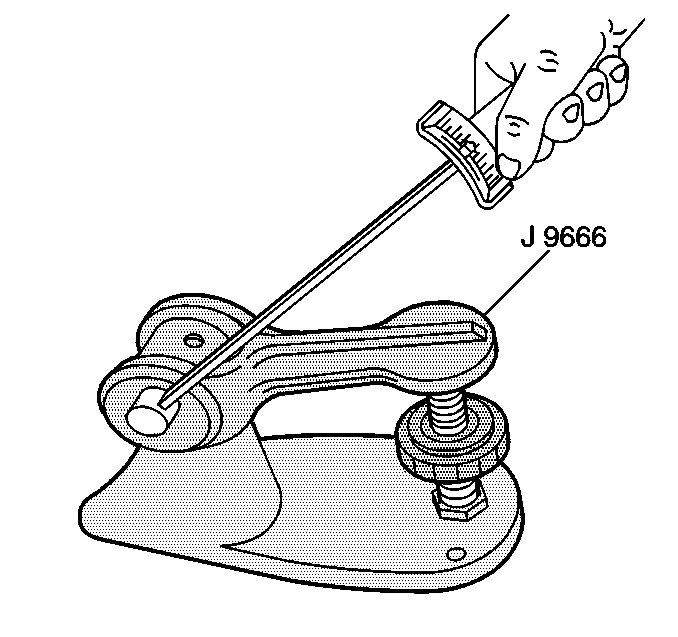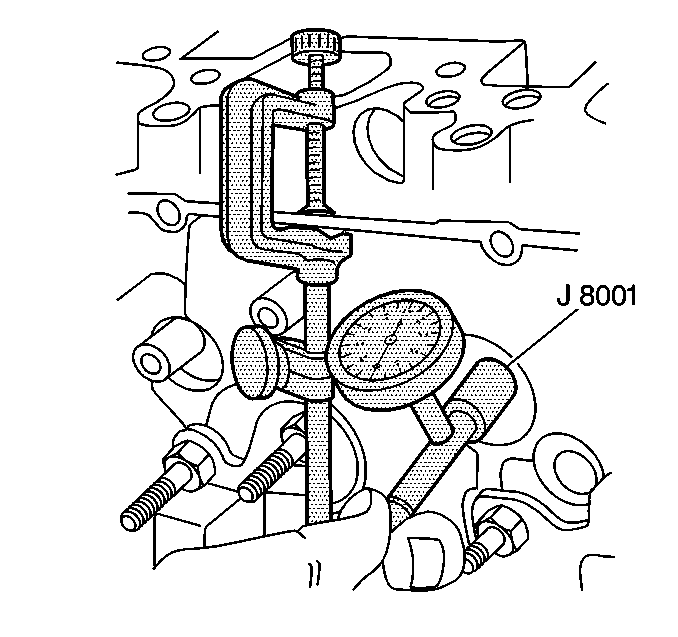For 1990-2009 cars only
Tools Required
| • | J 8001 Dial Indicator |
| • | J 8089 Wire Brush |
| • | J 9666 Valve Spring Tester |
- Use the J 8089 in order to clean the carbon from the combustion chambers and the valve parts. Be careful not to scuff the combustion chambers and valve stems.
- Clean the following areas:
- Inspect the following areas:
- Inspect the cylinder head deck face flatness with a straight edge. Refer to Engine Mechanical Specifications .
- Use the J 9666 in order to measure the valve spring.
- Measure the valve stem-to-guide clearance.
| • | The carbon and the sludge from the valve pushrods and the valve rocker arms |
| • | The valve stems and heads on a buffing wheel |
| • | The cylinder head and engine block gasket surfaces |
| • | The bolt hole threads in the cylinder heads and the engine block |
| • | The cylinder head for cracks in the exhaust ports and combustion chambers |
| • | The cylinder head for external cracks in the water chamber |
| • | The valves for burned heads, cracked faces, or damaged stems |
| • | The valve springs for squareness |

Replace the spring if the spring tension is less than 325 N (73.1 lb) at 40.64 mm (1.600 in).

| • | Excessive valve stem-to-guide clearance may cause excessive oil consumption and may cause a valve to break. Insufficient clearance will result in noisy and sticky functioning of the valve, will disturb the engine assembly smoothness, and could result in a scuffed valve stem. |
| • | Clamp the J 8001 on the exhaust port side of the cylinder head. |
| • | Locate the indicator so that the movement of the valve stem from side to side, crosswise to the cylinder head, will cause a direct movement of the indicator stem. |
| • | The indicator stem must contract the side of the valve stem just above the valve guide. |
| • | Drop the valve head about 1.6 mm (0.063 in) off the valve seat. |
| • | Use light pressure when moving the valve stem from side to side in order to obtain a clearance reading. |
| • | Ream the intake valve guides for oversize valves if the clearance exceeds 0.053 mm (0.0020 in) on the intake valve. |
| • | Ream the exhaust valve guides for oversize valves if the clearance exceeds 0.075 mm (0.0029 in). |
